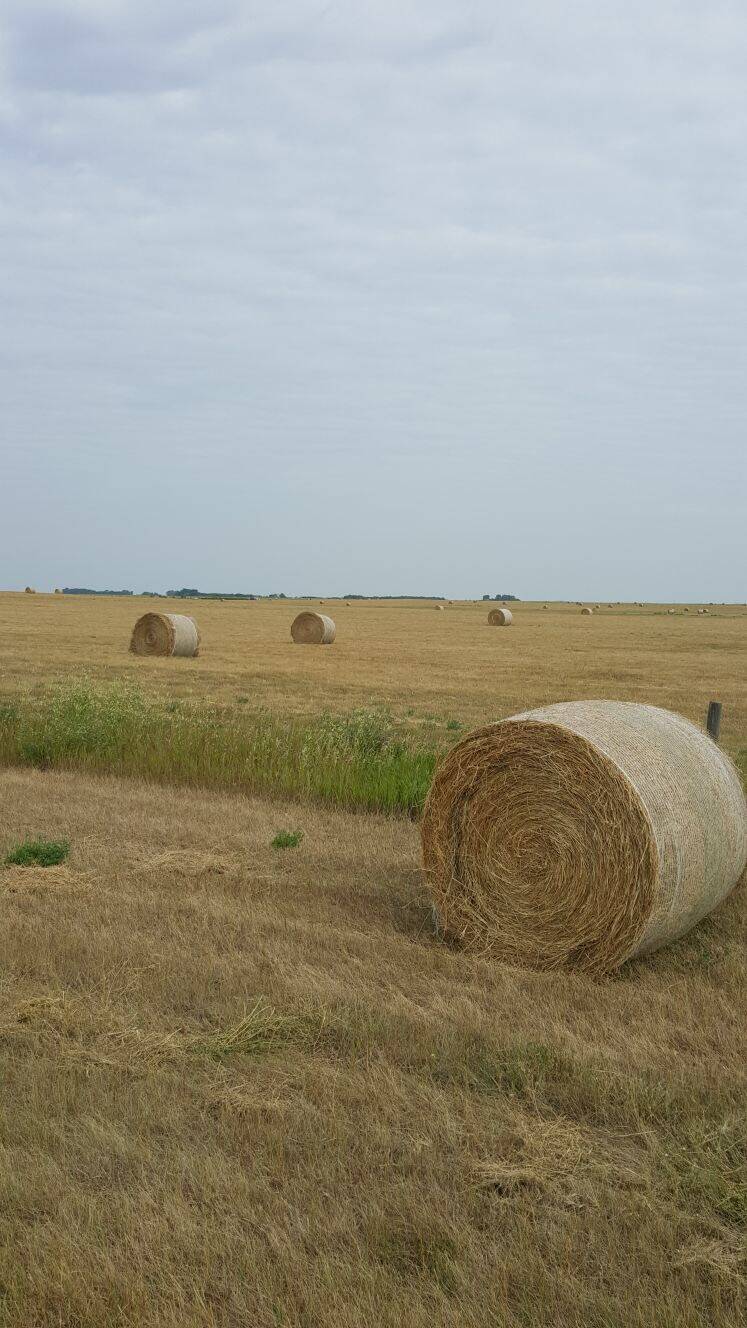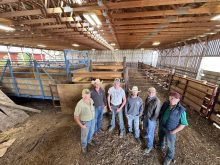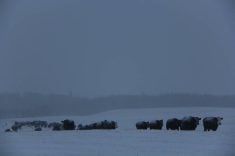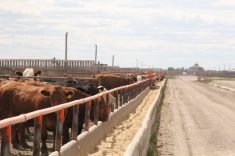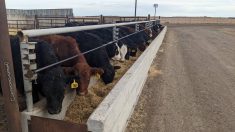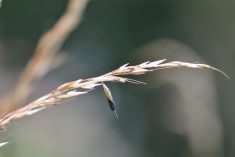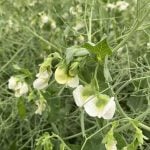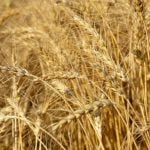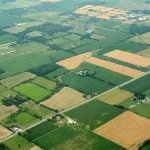As hot, dry weather persisted this summer, some producers have looked to salvage crops for feed instead of grain. This is a great opportunity to get value from your crop and provide more feed options to livestock producers. Salvage crops can be a great feed source for livestock. However, there are a few things to keep in mind when salvaging crops:
1. Check the grazing or feed restrictions on the chemical used on the crop. Some pesticides, such as lambda-cyhalothrin, are not approved for livestock consumption. If feeding and grazing restrictions exist, ensure the crop is fed in the manner instructed on the label, or not fed at all. If the label of the chemical you applied does not include grazing or feeding restrictions, contact your local crop extension specialist or agronomist for more information on chemical restrictions.
2. Feed test. Nutrient values help determine how much of an animal’s nutrition can be provided by the salvage crop. Book values are available to estimate the nutrient value of a crop. But the value can vary greatly, so feed tests are important. Key nutrients to look for are crude protein, total digestible nutrients or net energy values, neutral detergent fibre, acid detergent fibre and mineral content. Brassicas, such as canola, can have high levels of sulphur, so check the feed test for those levels. Sulphur levels can be further exacerbated if the water source for the livestock is high in sulphates, making water testing important if feeding these crops.
Read Also
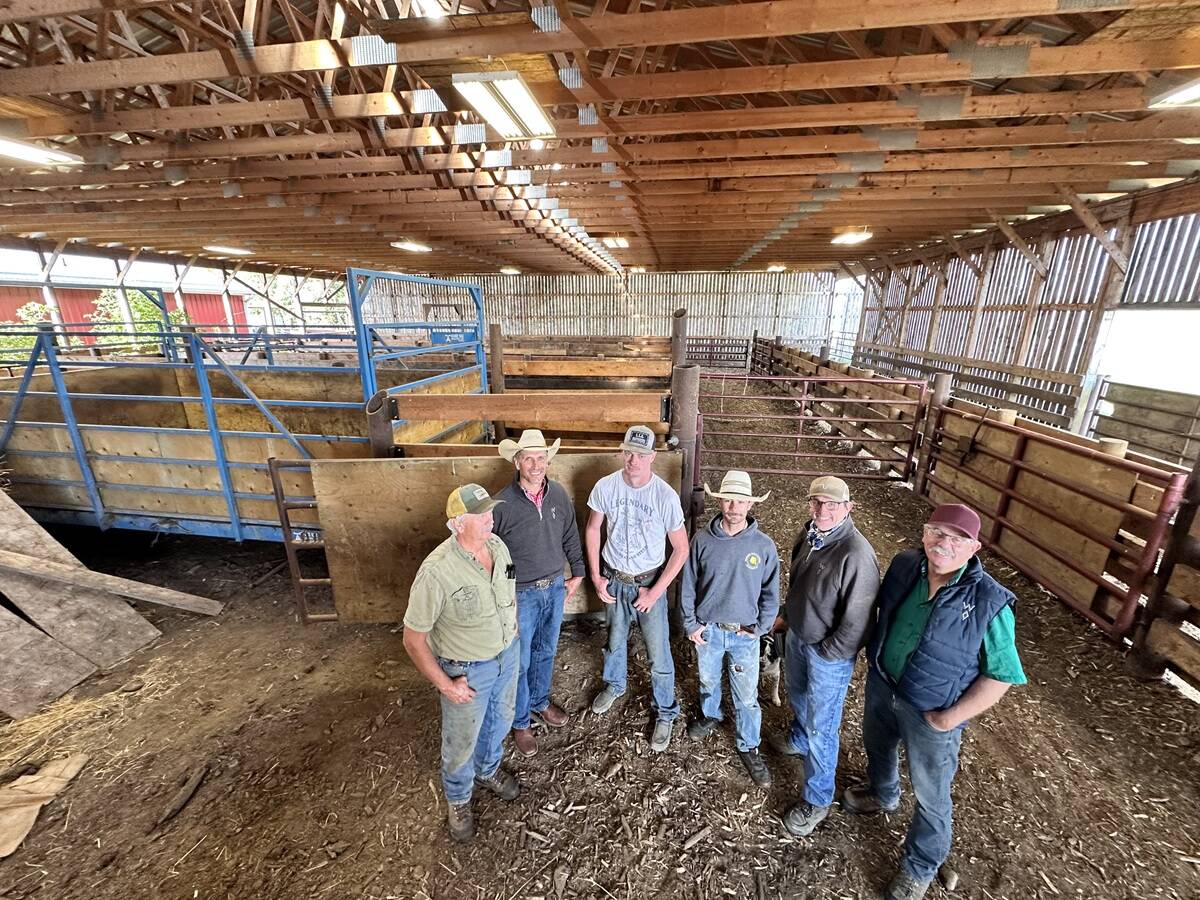
Farm families work together to graze cropland with cattle in the fall
These Alberta farm families have separate operations, but work together to manage their land
3. Test for nitrates. It’s critical to watch for nitrates in stressed plants — whether that stress is hail, drought, frost or something else. Plants that are well known to be nitrate accumulators include cereals and brassicas, especially those fertilized for grain production. Nitrate toxicity in ruminants can show up as watery eyes, abortions, laboured breathing, muscle tremors and death. Including a nitrate test on these crops will help you determine if nitrates will be a problem and allow you to blend the feed to a level that will reduce the risk of toxicity.
4. Watch for diseases. Depending on your growing conditions, ergot bodies may be present in salvaged feed. Ergot bodies are typically found in cereal and grass crops under prolonged wet soil conditions and cool weather. These conditions favour the development of ergot bodies in crops as they extend the flowering period, which is when crops are susceptible to infection. Small amounts of ergot can be toxic. Watch for ergot toxicity symptoms including lameness; abortions; reduced productivity; loss of hooves, portions of the tail or ears; and, in extreme cases, death. If your crop has visible mould, or was put up with excess moisture, check it for mycotoxins with a feed test. Fusarium and other fungi can cause health issues for livestock similar to ergot toxicity, with symptoms ranging from feed refusal to death. Getting a mycotoxin and/or ergot test on these feeds will allow producers to mitigate the risk from these toxins.
5. Watch for other anti-nutritional factors. Some crops naturally contain substances that can negatively affect livestock. If flax freezes, it can contain prussic acid, which can cause laboured breathing, excessive salivation, convulsions and death. Prussic acid can also be present in sorghum Sudan grass. Some compounds in buckwheat forage can cause photosensitivity in livestock, which could lead to skin blistering and peeling. Fenugreek straw has been sporadically shown to cause neurological illnesses, which is characterized by livestock having weakness in their hindlimbs, trembling muscles and eventually death. While not as severe, many salvaged crops may have palatability issues which can reduce feed intake. To account for these factors, it is important to blend salvaged crops at low levels into the ration.
6. Watch for weeds. Many weeds can accumulate anti-nutritional factors and toxins, such as nitrates, oxalates, pyrrolizidine alkaloids and others. Particularly, kochia can accumulate high levels of nitrates, oxalates, sodium, sulphur and other compounds that can make it toxic. Aside from the toxicity of some weeds, seeds can also be spread through livestock, creating issues if cattle are wintered on future pasture or hayland. Approximately 15 per cent of weed seeds can be viable after passing through a rumen, and those that drop out of the hay before the cattle eat it are also viable. If you have a lot of weed pressure in the crop you are salvaging for feed, it is important to take note of the weeds present and include it in a lower proportion in the ration and/or feed it in a location where the weeds can be easily managed.
7. What is the crop worth as feed? There are a lot of things that go into pricing salvage crop as feed, including the costs that went into growing the crop, the lost revenue from the grain, lost value from leaving residue in the field, harvest costs and storage costs. A calculator is available from the Saskatchewan Ministry of Agriculture to help producers determine a price for feed from their salvage crops. Visit Saskatchewan.ca and search for Grain Silage Greenfeed Calculator.
8. Grazing stubble can be another way to get feed value out of cropland. Straw and chaff can be variable in quality and are low in protein and energy. Because of this, it is best to graze dry cows who are still early in pregnancy since their needs are still low. If grazing the stubble later in the year, supplementation will likely be needed. Grazing stubble has the added benefit of applying manure directly to the land for fertilization.
Salvaging crops as feed can be a great way to still get use out of a crop despite the challenges that can be associated with it. For more information about feeding salvaged crops, contact your local livestock and feed extension specialist or the Agriculture Knowledge Centre at 1-866-457-2377.

